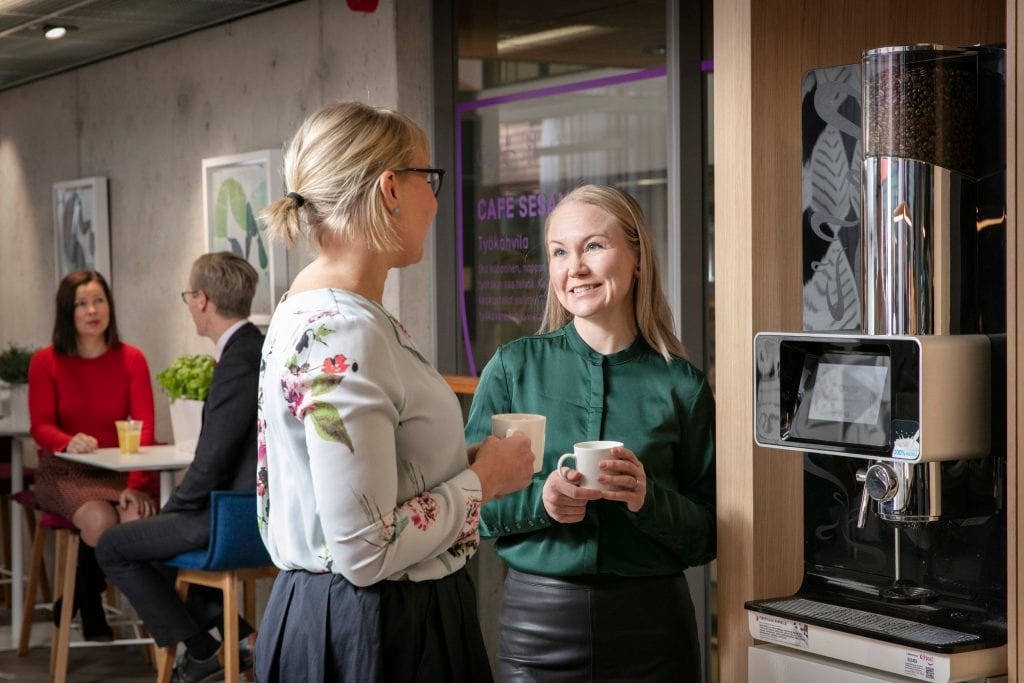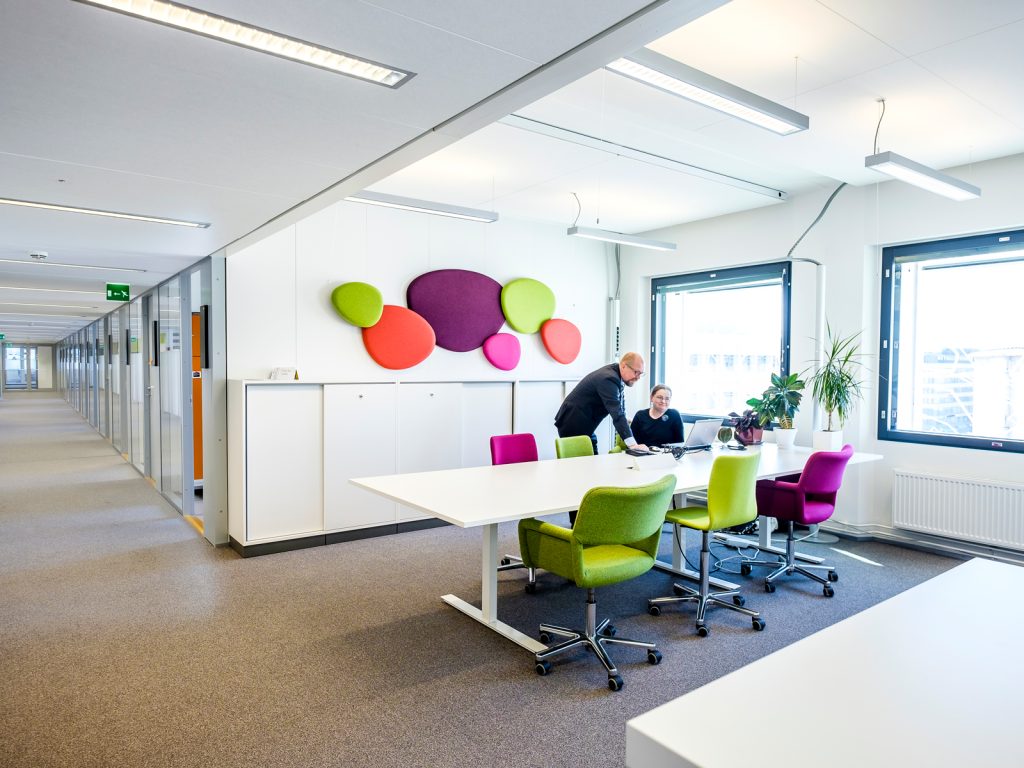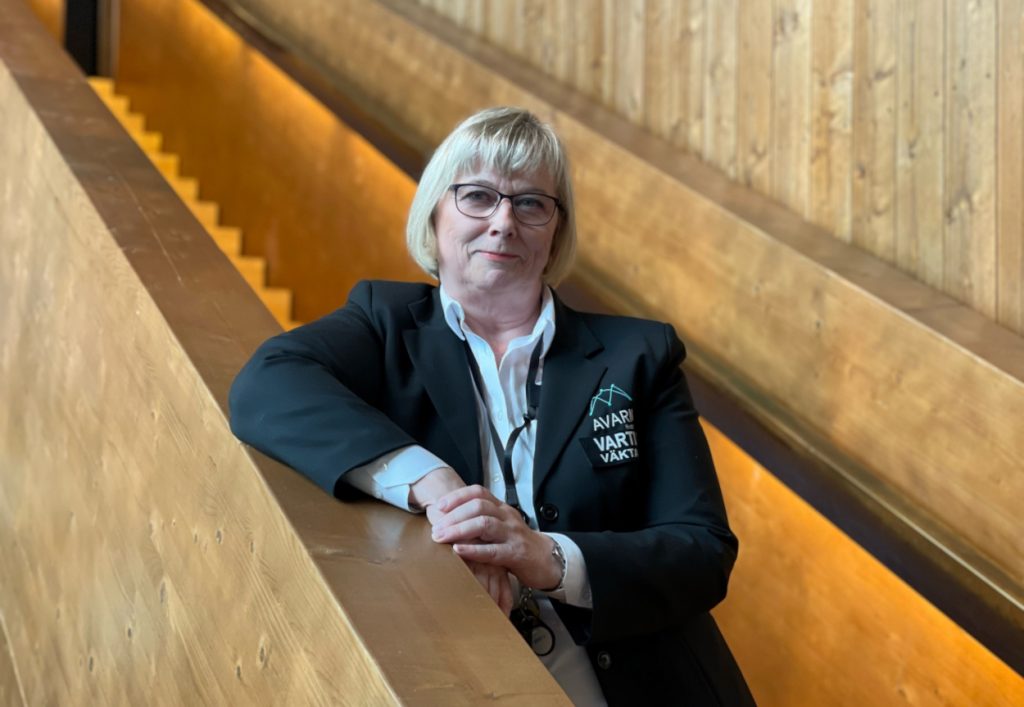
What can you do for indoor conditions?
The role of facilities users in indoor conditions
As facilities users, we often forget that our own actions and choices, however trivial they may seem, can impact indoor air. The experience of musty indoor air is often caused by the room temperature being set too high or by too many people working in the same space for its size. To reduce odour emissions, new furniture should be aired well before bringing it into the premises. Also, dirty furniture can cause mustiness and an unpleasant odour. A colleague who smokes ruins the indoor air for several minutes after their cigarette break. Untidiness of the premises, piles of papers and books on desks, in open bookshelves and on windowsills, tangled cables and personal ornaments attract dust and hamper or prevent cleaning.
A clear link has been found between cleaning and indoor air quality and in turn human health, enjoyment and work effectiveness. Daily experience has shown that a deterioration in the standard of cleaning could result in indoor air problems or an exacerbation of the problems. It’s not advisable to skimp on cleaning.
If, despite cleaning, dustiness of the facilities is a problem and the cleaning regime seems to be in order, feedback is given via the service request systems in use. The normal – and adequate – cleaning regime in use in Senate Properties’ office-type facilities looks like this:
- In normal daily/weekly regular cleaning procedures all uncluttered furniture surfaces, floors, contact surfaces and stains from vertical surfaces are cleaned inasmuch as this is possible.
- A few times a year, the floors are washed and treated mechanically and harder-to-reach surfaces are cleaned.
- Once a year, the surfaces of ventilation ducts and valves, cable trays and shelves, cooling coils, curtain pelmets, various beams and protrusions, except for suspended ceiling structures, are cleaned.
- Cleaning of suspended grating ceilings and various suspended ceiling structures, for example every five years must be separately agreed and the work ordered.
Indoor air quality is adversely affected by items brought into the office that do not belong there such as wet overalls or uncleaned outdoor equipment. The use of various scented products such as air fresheners and scented hygiene products also burdens the indoor air. A personal printer also produces odour and particulate emissions in your own workplace. Forgetting snacks left in a waste bin or cupboard at the workplace is a surprisingly common cause of many observations of mould odours.
In order to prevent indoor air problems, it is important to take into account adequate ventilation when planning room arrangements and modifications in the uses of the facilities. It goes without saying that the ventilation in a storeroom is different from that in an office, nor can office space be converted into a meeting room without major changes to ventilation. It is advisable to ensure the adequacy of ventilation when increasing the number of persons working in the teamwork zone of an activity-based office.

Even small acts can improve the indoor air in an office
Good indoor air is the sum of many factors. It starts, for example, by leaving wet coats to dry in a well-ventilated space and by hiding piles of paper in the cupboard.
Reporting adverse indoor conditions
Good indoor air requires effective cooperation between the facilities user, property maintenance and the property owner. It’s everyone’s civil duty and right to monitor their work environment and its condition, and to report any defects or disruptions observed and not to think that only property maintenance or the property owner are responsible. If you experience indoor air problems, you must act according to the property owner’s and jointly agreed operating model. Reporting channels depend on whether property maintenance is the responsibility of the client or Senate. In addition, it should be remembered that if the owner of the facilities is some other entity than Senate Properties, the owner’s instructions are followed with regard to reporting practices.

Easy to make a service request with the QR code
Scan the QR code to submit a service request simply and quickly. Property maintenance receives information about the service request immediately and access the fault more easily than earlier, thereby making it simpler and faster to repair faults.
What happens once the facilities user has made a complaint about indoor air?
Senate has an operations model for investigating any indoor air problems at its gross rent properties. The model includes an initial inspection by property maintenance, where needed a preliminary inspection by the rapid response teams and more detailed investigations carried out by an indoor air consultant, the establishment of an indoor air team, taking remedial measures and the monitoring of their effectiveness as well as communication about all of this. Most of the problems are resolved by property maintenance measures without the need to establish an indoor air team.
Related
Working for better indoor conditions
What do we mean by indoor conditions?
What is Senate Properties doing to ensure better indoor conditions?
Articles related

Like a business card – what makes a good reception service?

Responsibility is part of construction

We help our clients to raise their level of preparedness

Network of shared work environments expanding in stages

NATO membership will make Defence Properties Finland’s operating environment even more international

